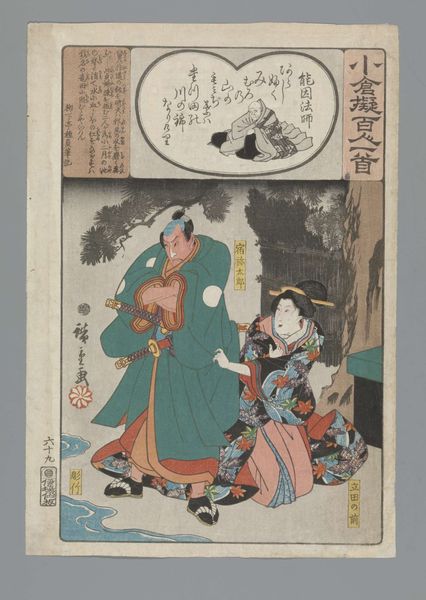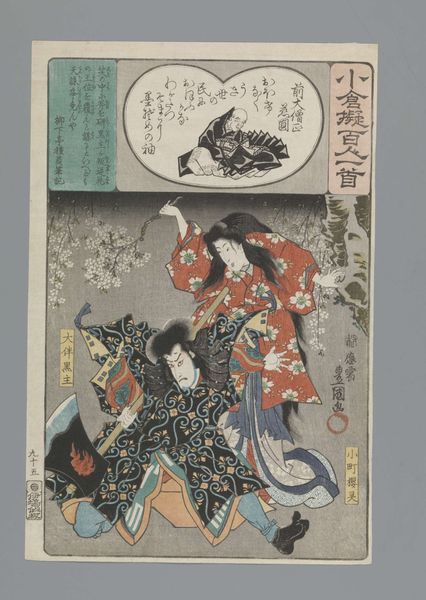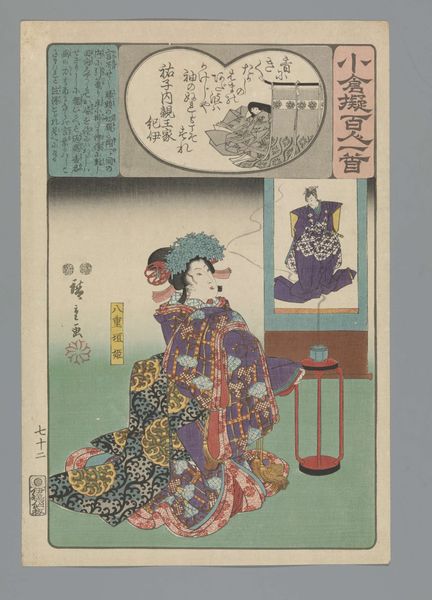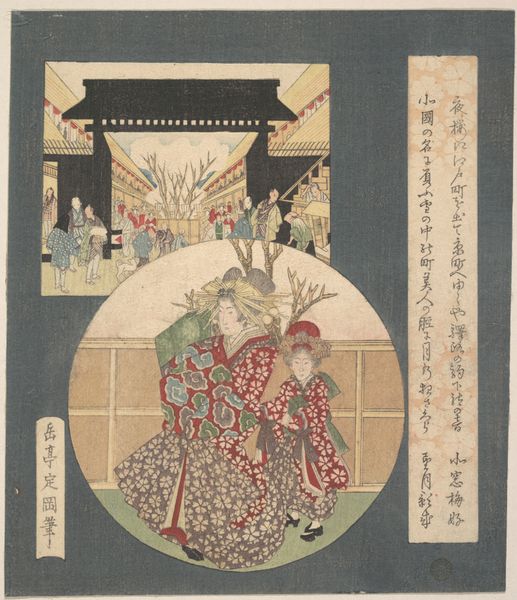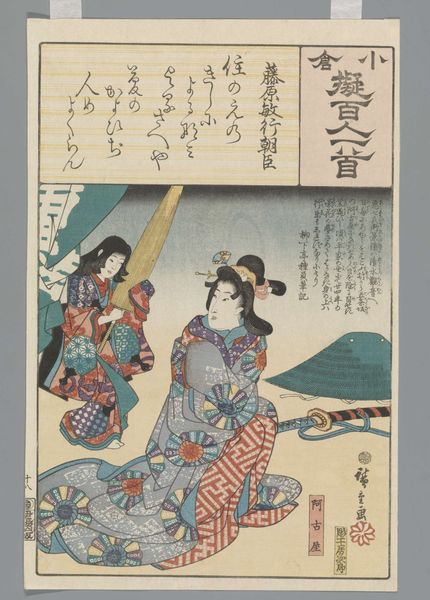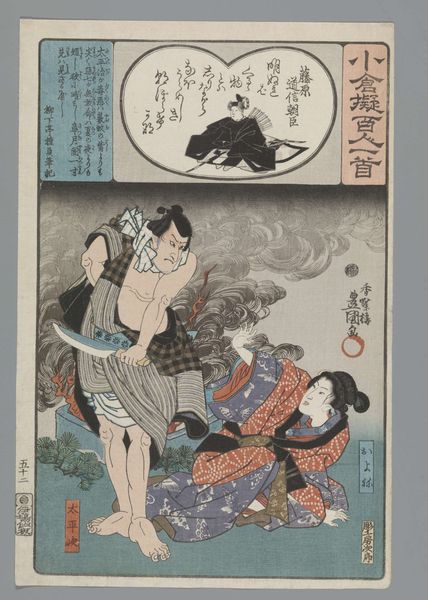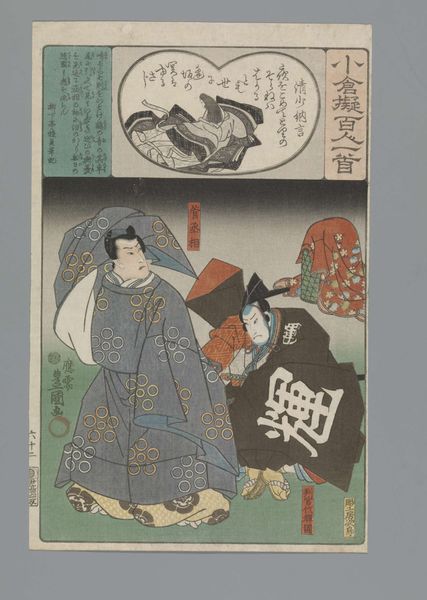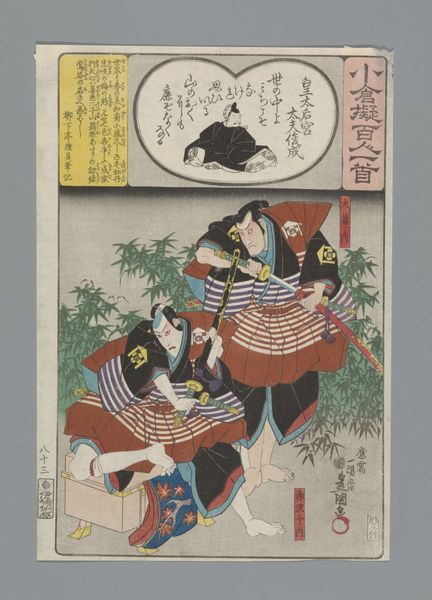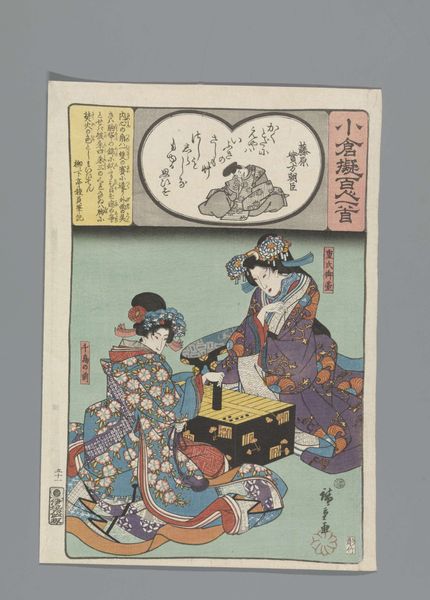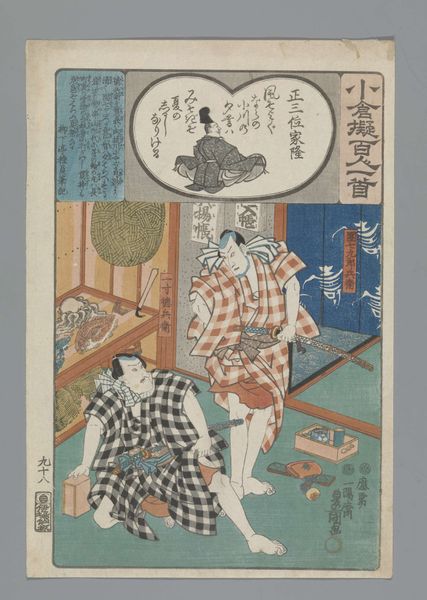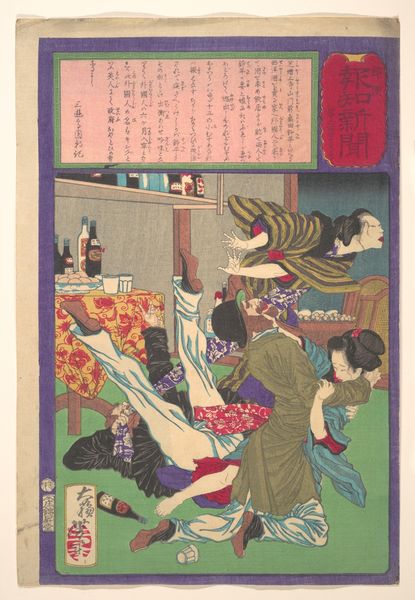![['Imperial Princess Shokushi', 'Ogura Imitation of the One Hundred Poems'] by Utagawa Kunisada](/_next/image?url=https%3A%2F%2Fd2w8kbdekdi1gv.cloudfront.net%2FeyJidWNrZXQiOiAiYXJ0ZXJhLWltYWdlcy1idWNrZXQiLCAia2V5IjogImFydHdvcmtzLzQ2MTdkZGE0LWQ5MjYtNDIyNi1hMGZiLTcyYjlmMWM4MjFlZS80NjE3ZGRhNC1kOTI2LTQyMjYtYTBmYi03MmI5ZjFjODIxZWVfZnVsbC5qcGciLCAiZWRpdHMiOiB7InJlc2l6ZSI6IHsid2lkdGgiOiAxOTIwLCAiaGVpZ2h0IjogMTkyMCwgImZpdCI6ICJpbnNpZGUifX19&w=3840&q=75)
['Imperial Princess Shokushi', 'Ogura Imitation of the One Hundred Poems'] 1847 - 1850
0:00
0:00
utagawakunisada
Rijksmuseum
print, woodblock-print
#
portrait
#
narrative-art
# print
#
asian-art
#
ukiyo-e
#
figuration
#
woodblock-print
Dimensions: height mm, width mm
Copyright: Rijks Museum: Open Domain
Curator: I’m immediately struck by the intricate detail in this woodblock print; the delicate floral patterns of the kimono juxtaposed against the solid geometry of the window frame... it's really captivating. Editor: It is a lovely piece. What exactly are we looking at here? Curator: This is “Imperial Princess Shokushi, Ogura Imitation of the One Hundred Poems” by Utagawa Kunisada, created sometime between 1847 and 1850. Currently it resides here at the Rijksmuseum. Editor: "Ogura Imitation"...is that title telling us something about its creation and cultural moment? Curator: Precisely! "One Hundred Poems" refers to the "Ogura Hyakunin Isshu", a renowned collection of waka poetry. Kunisada and other artists frequently created Ukiyo-e prints interpreting these poems and their associated imagery. Shokushi, the Imperial Princess featured, was herself a prominent poet. So, it is about layering cultural references. The artist takes classical literature and re-presents it to a contemporary audience. The figure at the top might even allude to one of her poems. Editor: So we are looking at an act of interpretation in two stages? It makes one wonder, what were the societal pressures and popular interests that encouraged or shaped Kunisada's creative process? Was he just trying to create a profitable product for a burgeoning market? Curator: Kunisada certainly understood his market. Ukiyo-e prints were incredibly popular with the rising middle class in Edo-period Japan, feeding an appetite for both high art and popular culture. Notice the kabuki actor perched within the window. These actor portraits served as a form of celebrity endorsement. They also blurred the line between traditional and popular values of the period. Editor: Absolutely. And those small details - like the hanging wind chime – whisper of daily life and fleeting beauty, concepts crucial to Ukiyo-e tradition. One begins to understand more broadly the visual vocabulary of its cultural traditions. It feels like something of an aesthetic bridge! Curator: A wonderful thought. It speaks to how Ukiyo-e provided visual narratives, both poetic and playful, connecting audiences to their heritage. Editor: Ultimately, it showcases a wonderful fusion between social and cultural representation in 19th century Japanese art.
Comments
No comments
Be the first to comment and join the conversation on the ultimate creative platform.
